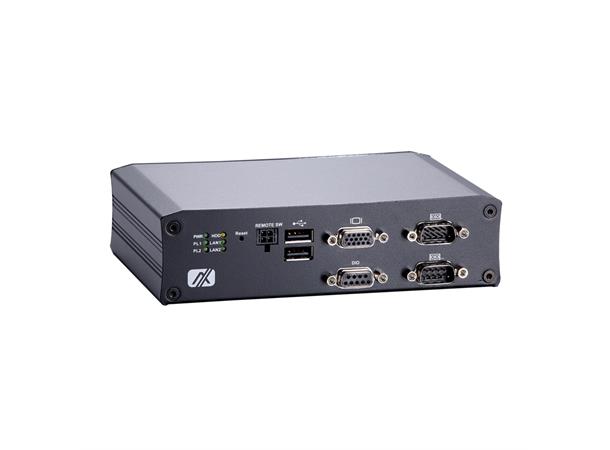
Pushing data processing to the edge: The benefits of edge computing in maritime industry
Smart ships with automated systems are becoming increasingly dependent on real-time data processing. Edge computing may be the optimal solution to latency and connectivity challenges.
Keeping on pace with the rest of the industrial world, the maritime industry is continuously evolving and exploring new opportunities. Technological advances in areas such as automation, robotics, artificial intelligence, machine learning and the digital sphere in general have changed the game – and the way the industry does business.
Smarter ships, automated operations, proactive maintenance, improved security and better visibility across the supply-chain are prerequisites to meet the ever-growing demands for productivity, profitability and cost-efficiency, and many of these major advancements are direct results of the introduction of the Industrial Internet of Things (IIoT) around the turn of the millennium.
Since 2002, the IIoT has taken advantage of cloud technology to move an increasing amount of data storage and processing from centralized computer hubs and into the cloud.
The IIoT’s newest development – edge computing – takes this decentralization one step further.
Distributed processing architecture
The countless new opportunities that have emerged, are emerging and will emerge as a result of the IIoT revolution are all driven by the same essential resource: data. As such, results rely heavily on to main prerequisites: connectivity and sufficient bandwidth.
Data generation and collection is increasing exponentially and explosively – the notion that “90% of the world’s data were generated in the last two years” is already six years old – resulting in ever-increasing requirements for connectivity and bandwidth, accompanied by skyrocketing data center infrastructure and networking costs
What edge computing essentially does is to distribute data processing amongst a series of so-called gateway PCs, or simply gateways, located closer to the edge of your network and the devices and machinery performing tasks and operations, rather than processing all data in the cloud or in a centralized computer hub.
This distributed processing architecture reduces the system’s reliance on cloud connectivity, relieves the network of bandwidth congestion, reduces latency, and may additionally lower data center costs.
Edge computing explained
In a typical edge computing set-up, a gateway is installed as close as possible, and with a direct connection, to the sensors monitoring and collecting data from a designated sub-system or piece of machinery.
These sensors often monitor tendencies and changes in vital processes and devices, collecting data as often as every millisecond. If no changes occur, continuously transmitting all that data to the cloud would be a waste of both bandwidth and processing power – an hourly update or even an end-of-the-day report might be sufficient.
An edge gateway stores, analyses and filters the data locally, generates insights and forwards only the necessary the data to the cloud.
Solving the connectivity challenge
All industries may benefit from IIoT advances and developments, but edge computing is particularly interesting to the marine sector due to the obvious challenges with connectivity and bandwidth.
While traversing the open seas network connectivity and coverage may be unstable and unreliable, and bandwidth may be scarce. With more and more automated systems, machinery and devices relying on real-time data processing, not being able to transfer that data to the cloud to be processed may have a major impact on the operation in terms of productivity, efficiency and profitability.
More importantly, it may affect safety and security for personnel onboard the vessel, as heavy operating machinery depends on automated alarm triggers and kill switches to prevent potentially catastrophic incidents and accidents.
By employing edge computing, connectivity will no longer be an issue, as the locally installed gateways are able to process the data and act accordingly – whether that action is to trigger an alarm, shut a valve or hit the kill switch.
Eliminating network latency
While there are many benefits to edge computing, the most important aspect of this innovative IIoT technology is its ability to process data in real-time – near eliminating network latency.
With cloud processing all data must be transmitted to the cloud, analyzed and forwarded to a computer hub – or sent back to the device in question to trigger an action. And every “jump” the data makes introduces latency to the network. Even in a closed network it is not uncommon for as much as two seconds of latency to occur.
Latency and delayed data transfer may have a real impact on operations, as well as severe implications for onboard safety and security.
If, for instance, a crane weighing several tonnes is in the process of rotating and a sensor notices an unforeseen obstruction in its path a braking mechanism must trigger immediately.
One second of latency may be the difference between a near miss and a catastrophe.
Key takeaways
Edge computing moves the bulk of data processing from the cloud to the edge of your network. By doing so, edge technology offers several important benefits:
- Real-time data analysis
- Reduced latency
- Immediate automated action when required
- Reduced overall data traffic
This relieves the network of data congestion, reduces the system’s connectivity dependency, and plays a major role in ensuring the safety and security of everyone and everything onboard a vessel.
Ready to push the edge?
Hatteland Technology has extensive expertise and experience in the field of edge computing and IIoT technologies. If you are interested in exploring edge computing, our knowledgeable consultants may assist you in identifying your hardware and network needs – and help you design your optimal solution.

 Axiomtek Marine PC
Axiomtek Marine PC